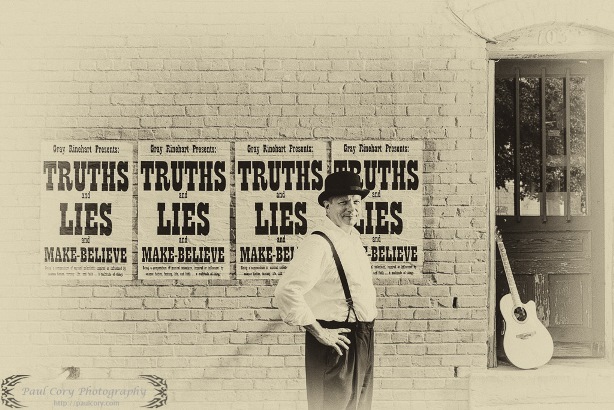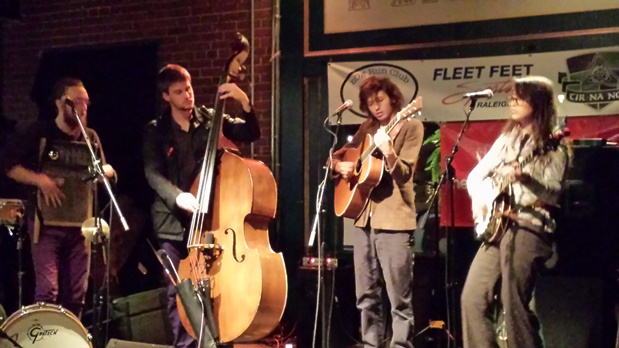illogiCon, the Research Triangle area’s science fiction and fantasy convention, will convene next weekend for its third installment.
(The illogiCon mascot, “Professor Schrodington.”)
Subtitled “The Search for Schrodington’s Gold” in honor of its mascot, pictured above, illogiCon is a small, fan-run convention being held here in Cary at the Embassy Suites Raleigh-Durham/Research Triangle. The guests of honor this year are my writing friends Mary Robinette Kowal and Lawrence M. Schoen, and many of my other writing friends will be part of the convention, too.
I’ll be on several panels, and will also present a reading (which in my case is always a “singing,” too):
Friday, January 10th
- 4:00 PM — Our Cyborg Futures…Today! Paralyzed veterans are now starting to test exoskeletons that allow them to walk again. Robotic hands are becoming more nimble, robotic legs more responsive and balanced. On a more subtle level, smartphones today can augment human brains and bodies in fundamental functions such as managing hunger and sleep, and expand intelligence in ways unimaginable just a few decades ago. Are we living in the dawn of the age of machine-men? (With James Maxey and Justin Andrews.)
- 9:00 PM — Lies With Words: The panelists are given a list of obscure and/or obsolete words in advance. All but one of them composes a false definition of the word, long or short, simple or complex, as they please. One panelist has the true definition. Can the audience tell which is which? Points are Awarded to each panelist for every audience member who buys into his/her lie. (Hosted by Lawrence M. Schoen. Other panelists: Mark Van Name, Michael Williams, Ed Schubert, and Bill Ferris.)
- 10:00 PM — Open Filk
Saturday, January 11th
- 11:00 AM — A Million Nations:: There was a time when where you lived was the primary determining factor of the culture you were raised in. But with the interconnectivity of the modern era, many of us get to build virtual neighborhoods of friends to socialize with online while never needing to bother with learning the names of people living next door in the real world. Is there anything resembling a common culture anymore? Or do we face a future of ever increasing cultural fragmentation as humanity sorts itself into a million different segments, all with differing values, myths … and even facts? (With James Maxey, Samuel Montgomery-Blinn, and Ed Schubert.)
- 12:00 PM — Social Scientists’ Science Fiction: There’s no shortage of science fiction written by authors with Ph.D.s in the “hard sciences” (biology, chemistry, physics), and their expertise show up in everything from world building to alien physiology. But what about authors with doctorates in Psychology, Sociology, Anthropology, Linguistics, Economics, and so on? Is the SF experience redefined when it comes from social scientists instead? (With Lawrence M. Schoen, Samuel Montgomery-Blinn, Michael Williams, and Bill Ferris.)
- 1:00 PM — READING … and singing!
- 5:00 PM — Baen Books Travelling Roadshow: Come find out whatʼs new from Baen Books. There will be an exploding spaceship.
- 11:00 PM — Open Filk
Sunday, January 12th
- 10:00 AM — Hard SF vs. Soft SF: From near-future thrillers so hard they could cut diamonds to allegories less-than-concerned about literal realism, science fiction covers a broad spectrum. How do they play together in the genre of ideas? (With Metricula and Samuel Montgomery-Blinn.)
- 5:00 PM — New Trends in Speculative Fiction: Speculative fiction often rides on the next big thing — the New Wave, Cyberpunk, Steampunk, Urban Fantasy, the Singularity, the New Weird. Where are we headed right now? Are there undiscovered movements just waiting for their central works? (With Samuel Montgomery-Blinn, Ada Milenkovic Brown, Bill Ferris, and Natania Barron.)
So if you’re in the Research Triangle area next weekend, and you need to get your fantasy and science fiction fix, stop by and see us!















